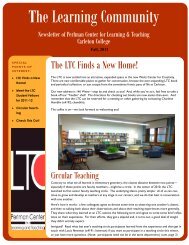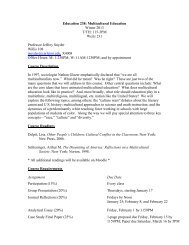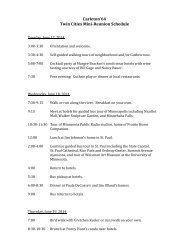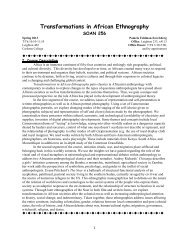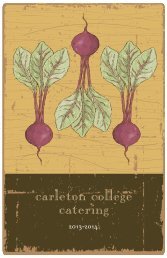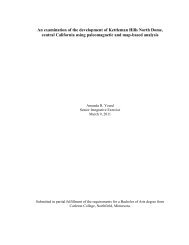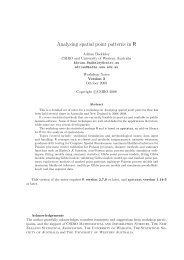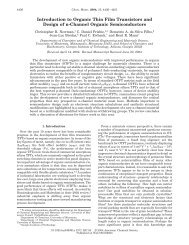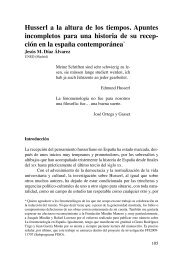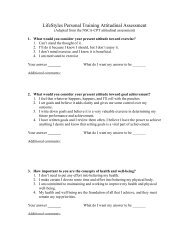Designing EcoHouse. - Carleton College
Designing EcoHouse. - Carleton College
Designing EcoHouse. - Carleton College
You also want an ePaper? Increase the reach of your titles
YUMPU automatically turns print PDFs into web optimized ePapers that Google loves.
they were free to incorporate thermal massing, light<br />
shelves, sun shading, and other eco-efficient strategies<br />
into their final designs. In the end, the students<br />
concluded that passive-solar design strategies<br />
would need to be supplemented by an additional<br />
heat source to maintain year-round interior comfort.<br />
A Positive Influence<br />
In spring 2006, students will design a “living machine”<br />
and explore ways to minimize waste that<br />
flows into, through, and out of <strong>EcoHouse</strong> while<br />
dealing with any waste created in a sustainable<br />
manner. Although the instructors may still be pondering<br />
how best to attune students to nature, there<br />
is little doubt that the <strong>EcoHouse</strong> endeavor is taking<br />
hold. For example, research leading up to and resulting<br />
from the course is now spilling into future<br />
<strong>Carleton</strong> building projects, such as a 40-unit student<br />
residence designed by LHB that will break ground in<br />
fall 2006. “We’ve proposed incorporating some living-machine<br />
ideas into this building’s design, such<br />
as separating gray and black water from storm-water<br />
drainage systems,” Strong says.<br />
The course has also spawned related classes,<br />
including one taught by Wagenbach that explored<br />
how to feed the future residents of <strong>EcoHouse</strong> in a<br />
sustainable manner, and independent-study projects,<br />
such as the construction of a small section of<br />
green roof atop a campus science building and an<br />
economic analysis of investing in wind power. “You<br />
can only learn so much by thinking about a project,”<br />
says Jason Lord, one of two former Eco-<br />
House students who led the green-roof project.<br />
“The real education takes place when you actually<br />
build it and have to solve problems.”<br />
Strong and Wagenbach attribute the high level of<br />
interest in <strong>EcoHouse</strong> to the fact that designing a<br />
home is an ideal way to engage students in the discourse<br />
about sustainability. Sociology major Josh<br />
Tolkan, who took the 2004 course and served as a<br />
teaching assistant the following spring, concurs:<br />
“The class provides a practical way to take environmental<br />
action, because it aims to improve the quality<br />
and efficiency of life.”<br />
“Of course,” Wagenbach adds, “building a tepee<br />
and leaving it in a prominent campus location as<br />
part of our exploration of indigenous dwellings has<br />
helped raise awareness, too. Whenever there’s a<br />
teachable moment, we take it.”<br />
JASON LORD AND DAVE HOLMAN<br />
JASON LORD AND DAVE HOLMAN<br />
Opposite: 2005 <strong>EcoHouse</strong> students used translucent polycarbonate<br />
and insulated foam panels to construct the south wall of a test<br />
structure. This page, top: Students from the 2004 class later designed<br />
and installed a green roof on a canopy overlooking the loading dock<br />
of a campus building. The students first tested plant materials by<br />
growing them in wooden boxes (bottom).<br />
NOVEMBER – DECEMBER 2005 61



